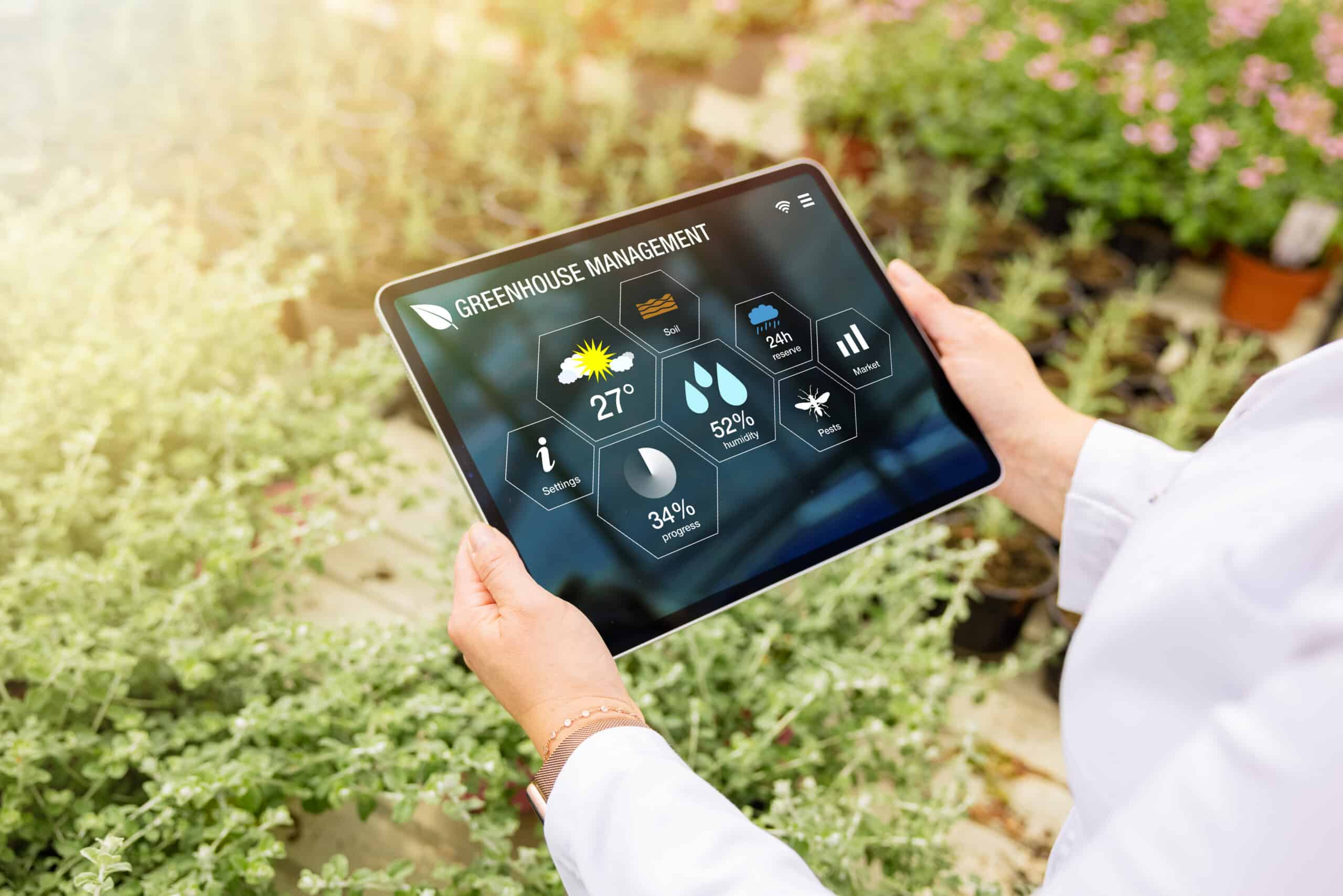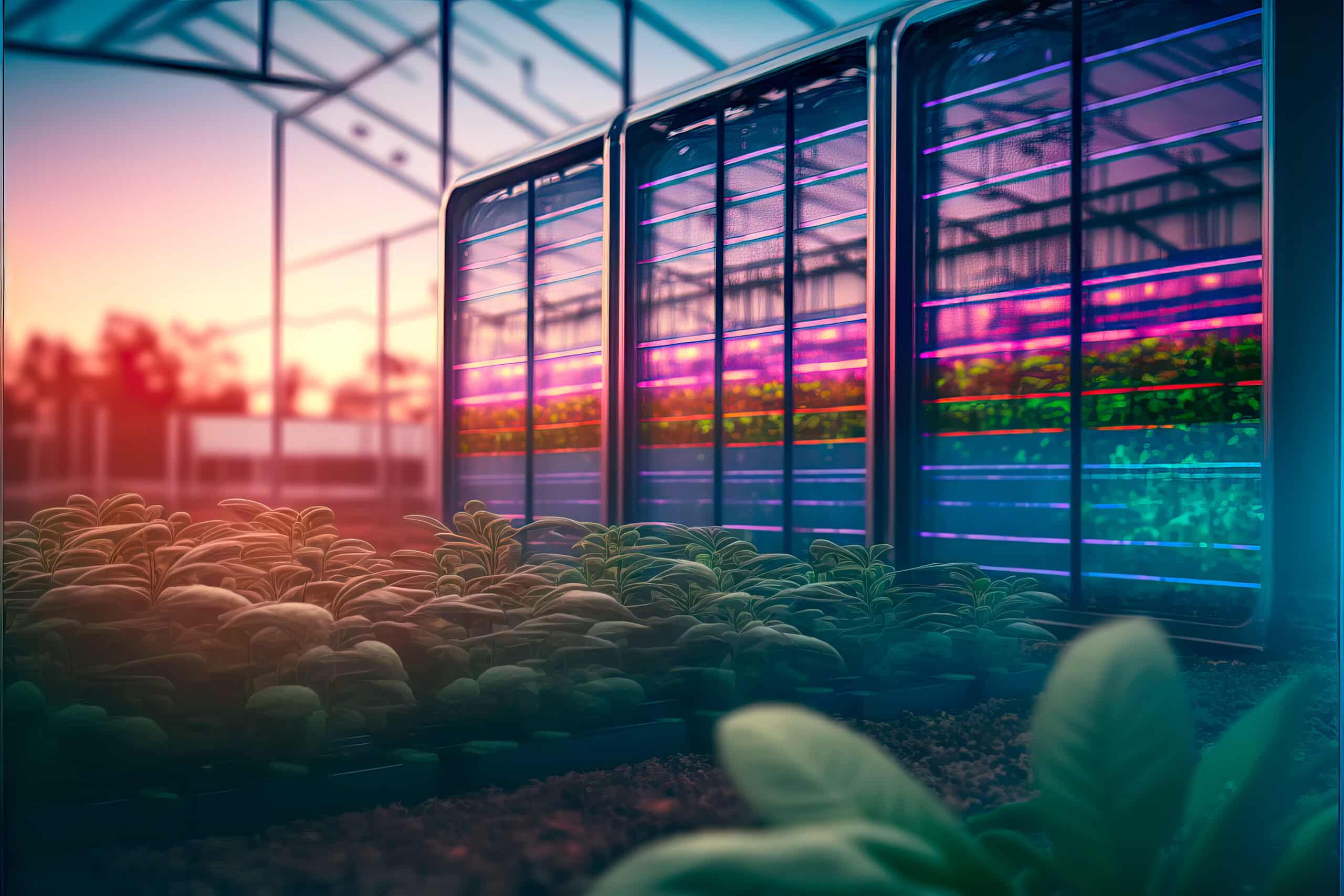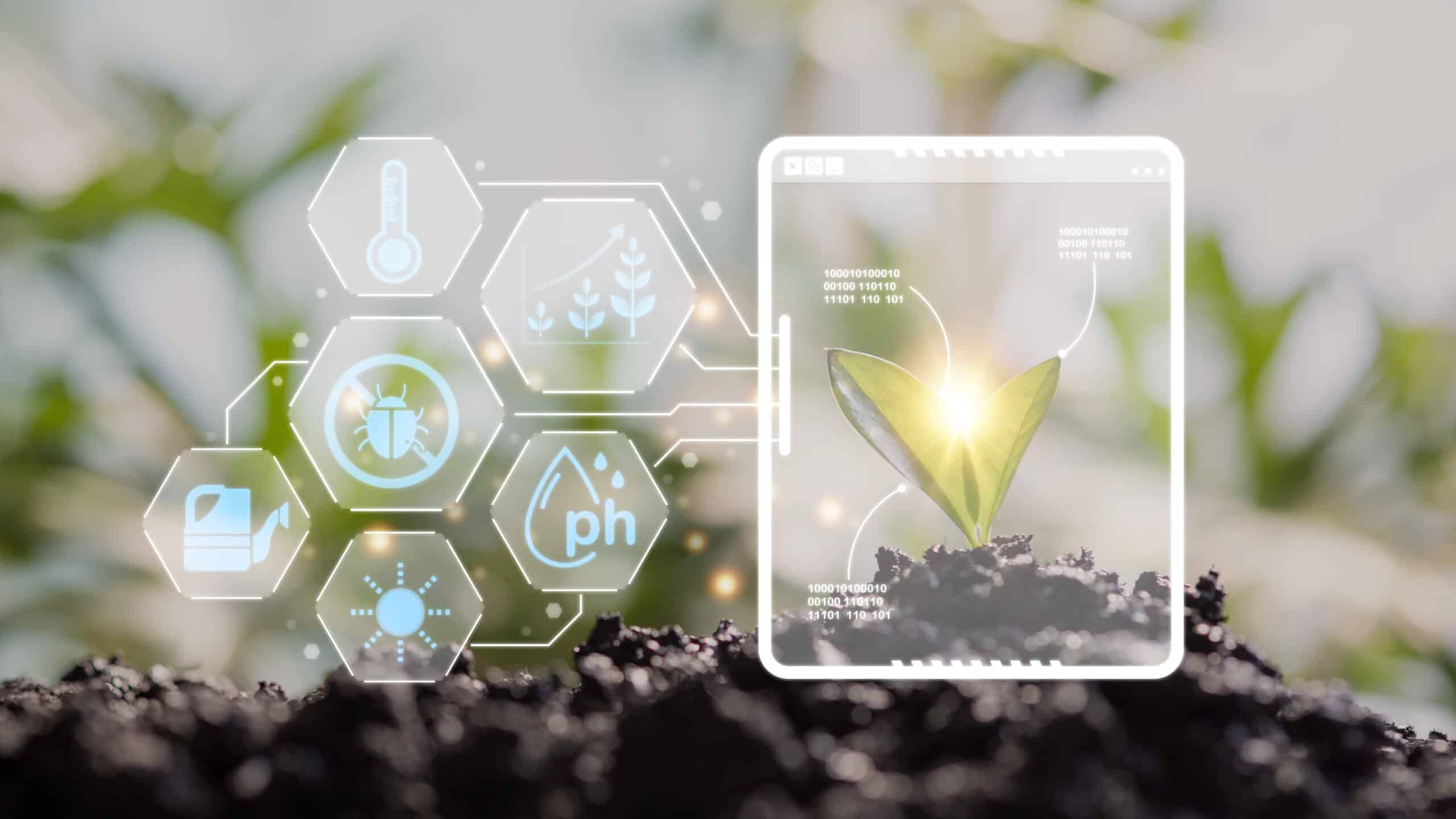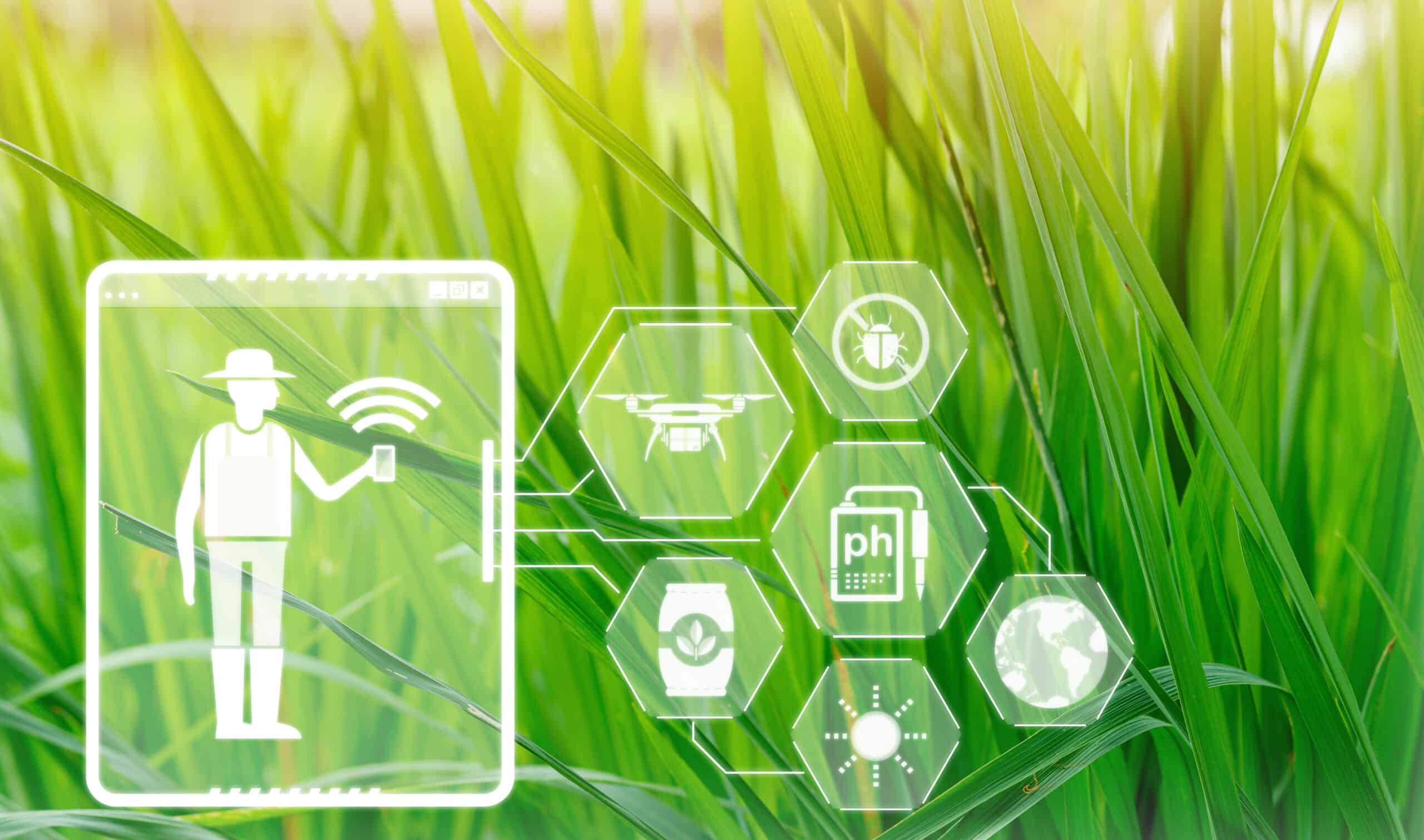A 2021 report delivered a clear message: precision agriculture enhanced U.S. crop yields by 4%. Broaden its adoption and that figure could climb to 6%. This isn’t just a statistic; it’s an opportunity. From farmers and suppliers to agricultural marketers and financiers, there’s a tangible potential for revenue growth through precision agriculture.
The driving force behind this? A trio of technologies: artificial intelligence, deep learning, and computer vision services. While agriculture might be perceived as a traditional industry, these technologies promise swift, significant improvements in yields and operational efficiency.
Picture this: An apple orchard where every step, from seeding to harvest, is overseen by AI-driven robotics, minimizing human intervention. With the rapid advancements in computer vision, this scenario is not just plausible; it’s impending. As the world’s population grows and food demand rises, automated agriculture, aided by computer vision, is set to become the norm.
In this article, we’ll navigate the transformative role of computer vision in agriculture, highlighting its benefits and explaining why, for any forward-thinking executive, investing in AI isn’t just smart—it’s essential.
The Impact of Computer Vision on Agricultural Practices
Imagine a world where machines can visually inspect, analyze, and provide feedback on agricultural processes without the need for human intervention. This isn’t just science fiction; it’s the future of farming. By leveraging computer vision techniques in tandem with remote cameras, we can unlock non-contact, scalable sensing solutions tailored specifically for the agricultural sector. At its core, computer vision technology, which allows machines to interpret the visual world similarly to humans, has many applications in agriculture.
One might wonder about the real-world benefits of such a blend. For starters, computer vision machine learning revolutionizes animal monitoring. Gone are the days of exhaustive manual checks. Instead, AI-powered systems, such as those based on the advanced YOLO algorithm, optimize object detection and object tracking in farming. These technologies offer precise animal monitoring, ensuring the health and safety of livestock.
Beyond animal care, computer vision paves the way for meticulous visual quality control, automated inspections that uphold stringent quality standards, and critical infrastructure monitoring. This is where the combination of video analytics and image recognition truly shines. No longer do we have to rely on the fallible human eye; machines can now detect minute discrepancies or issues that might escape manual observation.
Furthermore, the potential of computer vision in crop monitoring is nothing short of revolutionary. By harnessing the power of image analysis, farmers can gain invaluable insights into plant health, growth trajectories, and even potential stressors that might hinder crop yields. This means healthier plants, larger yields, and, ultimately, a more robust bottom line.
Delving a bit deeper into the technicalities, computer vision typically operates through three foundational steps:
- Acquiring the image or video footage via cameras.
- Processing the captured visuals.
- Analyzing and understanding the image content.
With recent advancements in deep learning, we’ve witnessed remarkable breakthroughs in image recognition. This new generation of deep learning technologies, when compared to their traditional computer vision counterparts, stands out in terms of robustness. Such methods can effortlessly perform video analytics, even with footage from standard surveillance cameras or webcams.
A significant trend in this realm is the marriage of edge computing and on-device Machine Learning, often referred to as Edge AI. Instead of relying on cloud-based processes, shifting AI processing to edge devices permits the simultaneous operation of machine learning everywhere. This convergence of IoT and artificial intelligence paves the way for scalable computer vision applications, suitable for expansive agricultural landscapes.
Add to this the fact that the global market size for computer vision applications in agriculture is expected to experience a compound annual growth rate of 23.3% between 2023 and 2032, ultimately reaching USD 11.13 billion by the latter year.
Smart Farming with Computer Vision Techniques

Smart farming, driven by AI-powered computer vision applications, has become the new norm in agriculture. These programs are helping to revolutionize precision farming and urban agricultural practices while enabling automation with robotic guidance technology and object detection via machine learning models.
AI-driven solutions such as deep learning have a big impact on smart farming. For example, autonomous tractors can assess their environment using cameras paired with neural network algorithms, tag crops, and monitor plant changes. At the same time, automated plows and tillers categorize soil conditions and determine seeding times.
Incorporating artificial intelligence into this sector offers promising results of increased productivity and resource optimization that can be seen across the entire agricultural industry soon, thanks to computer vision machine learning advances making it easier than ever.
Precision Agriculture and Crop Monitoring
Computer vision models are an invaluable tool in precision agriculture, providing deep insights into parameters such as leaf area, nutrient levels, and biomass. One prominent example of its use is the See & Spray system employed by autonomous tractors – it uses six stereo cameras along with sensor fusion to create a comprehensive depth map around them and segregate objects (such as trees or people) using semantic segmentation models. This computer vision-based method has demonstrated up to a 77% reduction in herbicide usage during crop monitoring operations. As this case study shows, precise control over existing processes through sophisticated technologies can help achieve resource conservation at unprecedented levels within precision farming practices today.

Livestock and Poultry Management Automation
Computer vision technology in animal farming increasingly enables farmers to reduce labor costs, raise productivity, and ensure the sustainability of agricultural practices. Deep learning algorithms for object detection or semantic segmentation are being utilized to detect diseases amongst crops, while artificial intelligence systems with visual capabilities can be used for real-time livestock monitoring and early disease identification, optimizing overall farm output. With these techniques, precision livestock farming has become feasible, allowing individual animals to be tracked through behavior analysis (volume/gait) alongside estimation of weight and length.

Computer vision also applies to fish farms, where it aids in species recognition, counting, intelligent feeding, size evaluation, behavior assessment, et cetera. Farming processes, streamlined by this tech, boast increases in efficiency compared to prior methods. The implementation of computer vision solutions in agricultural settings has bolstered efficacy whilst keeping up with general animal welfare standards and consumer demands for improved agricultural products.
Vertical and Urban Farming Innovations
The utilization of computer vision systems in vertical and urban farming is gaining traction as a potential solution to the growing demand for food, especially in cities with limited space. Through advanced analysis based on plant health, growth patterns, and environmental conditions using real-time data from cameras and sensors, these models help farmers make informed decisions about the optimization of crop output while also facilitating adjustments to parameters such as lighting temperatures or nutrient levels. This ultimately results in increased productivity with improved yields all within an enclosed environment.
As the world population continues to grow, computer vision’s role will be essential by aiding sustainable agricultural practices through innovative approaches like the one mentioned above.

Enhancing Yield Estimation and Prediction with Computer Vision
Computer vision and its advanced algorithms are essential for accurately predicting crop yields and optimizing cultivation practices. Taranis’ AcreForward Intelligence enables the identification of insect damage on a single-leaf basis, of weeds before they become an issue, of nutrient deficiencies, and of the number of plants in each field.
Through precision agriculture and computer vision models application, increases of up to 4-6% have been seen in crop yield, which is beneficial not just for farmers but their operations as well, helping with decisions like resource allocation and providing labor force where necessary. As this technology continues to develop, applications will arise that could potentially shape how the industry currently works, with increased predictive power concerning harvest estimates.
Computer Vision in Sustainable Agriculture
Computer vision has the potential to revolutionize sustainable agriculture by enabling farmers to monitor their crops, livestock, and other resources efficiently. AI-driven computer vision applications have already been developed for weed management and water and soil conservation, which can help optimize agricultural operations while reducing their environmental footprint. Computer vision technology is a useful tool allowing these advances, offering great promise when it comes to using innovative ways of protecting our planet’s resources now so they may be available in the future.

Weed Detection and Management
Integrating computer vision systems and robotics in weed management is key to successful sustainable agriculture. Machines, for example, can detect weeds before they become a massive issue and allow farmers to take prompt action that prevents crop loss. For instance, Laser Weeder uses 30 onboard lasers capable of targeting only the unwanted weeds while preserving crops – this automated system simplifies labor work and decreases herbicide use due to its accuracy, resulting in more eco-friendly farming practices which boosts yield rates.

Water and Soil Conservation

Computer vision algorithms are also a beneficial tool for farmers to promote the conservation of water and soil resources. Through analysis, they can identify areas that need irrigation or crop rotation more effectively, leading to higher crop yields and better farming practices. Such computer technology is becoming increasingly important due to its ability to monitor water usage, detect leaks, and recognize signs of erosion, all critical factors sustainable agricultural production. As food production needs continue rising worldwide, these innovative technologies must be employed more than ever to maintain water, our most essential natural resource, and guarantee sustainable agriculture moving forward into future generations.
Quality Control and Grading with Machine Vision Systems
As demand for quality assurance standards of food products grows worldwide, machine vision will play a major role in ensuring safety within agricultural industries through its rigorous monitoring capabilities. In the agricultural industry, machine vision and deep neural networks are leveraged to promote quality control in grading and sorting produce. By applying computer vision to techniques such as photogrammetry and camera calibration, these systems can precisely measure physical characteristics like size, shape, and color to accurately categorize fruits or vegetables based on their qualities. Automation thus reduces manual labor while minimizing waste throughout supply chains.
For example, fresh-cut cauliflower producers often grapple with the challenge of maintaining quality and detecting defects. Recognizing this, researchers from Shanxi Agricultural University pioneered an AI-based system to detect imperfections on fresh-cut cauliflower surfaces. Given that manual inspections tend to be not only sluggish but also inconsistent, the team employed a convolutional neural network augmented with transfer learning to differentiate between healthy and flawed cauliflowers, such as those that are diseased, browning, or mildewed. Achieving an impressive accuracy of 99.27%, this system holds great potential to improve the quality of the products significantly.

Harnessing Satellite Imagery and Drones for Advanced Agriculture
Computer vision is being leveraged to provide invaluable data for precision agriculture, crop health monitoring, and disease detection.
Satellite imagery such as the OneSoil Map sourced from the European Union’s Sentinel-2 satellites, covering 59 countries with 250 terabytes of images, has enabled more effective clouds, shadows, and snow detection while generating cleaner photos in general. This technology can drastically change farming practices due to its potential use in enabling key decision-making regarding land usage or crop management. UAVs (unmanned aerial vehicles) outfitted with imaging sensors capture high-resolution details pertinent to identifying how plants develop over time (phenotyping), aiding farmers by providing quality information regarding their crops.
The agricultural sector continues to embrace these technological advances that come together for computer vision, thus setting up greater possibilities for improving current standards pertaining to accuracy within agriculture plus overall crop health monitoring, simultaneously reducing chances of unseen diseases taking hold.
Aerial Imaging for Precision Agriculture
Through computer vision and drone technology, farmers can take advantage of precision agriculture to maximize yields. This enables them to gain detailed insights into the condition of their crops, which can be used for better land use and management decisions. UAVs with imaging sensors provide an accurate analysis of farmland so that more informed judgments may be made about operations and resources, leading ultimately towards a higher crop yield and improved farm productivity overall. As food requirements continue increasing, aerial imaging will become increasingly important for ensuring agricultural sustainability and productiveness going forward.

UAVs for Crop Health Monitoring and Disease Detection
By utilizing UAVs with computer vision systems to evaluate soil conditions, farmers can identify any potential pests or diseases that may cause losses in their crops while also assessing the health of plants on an overall basis using geo-sensing information. This is key to increasing farm productivity while ensuring a steady food supply worldwide.
Computer vision technology offers a valuable method for detecting signs of plant illnesses and other issues early enough so that action can be taken before large yields are lost due to untreated ailments or invasive insects, greatly reducing damages caused by these threats while potentially improving harvests through preventive maintenance strategies.
With the current demand for food products comes a greater need than ever for employing UAVs equipped with advanced computer vision tools – such equipment allows both improved accuracy when identifying risk factors across extensive agricultural land areas and more efficient utilization of resources involved compared to traditional methods being used currently today.
The Future of Computer Vision in Agriculture
The potential of computer vision to transform the agricultural sector and address challenges in food security and environmental sustainability is more promising than ever. Computer vision techniques unlock new efficiencies, allowing for such applications as crop monitoring, weed control, automated harvesting/sorting processes, livestock management, and soil analysis, all benefiting productivity while promoting resource conservation.
As advances continue with this innovative technology, there will likely be a surge in its utilization across various aspects of agriculture, from surveillance initiatives to vertical farming solutions that optimize limited space requirements.
Ultimately, looking ahead at what lies beyond even these forecasts, we can imagine an increasingly sophisticated reliance on computer vision within agriculture, bringing greater efficiency to meeting future global needs related to both production capability and quality assurance standards over time
Conclusion
The agricultural sector is experiencing an unprecedented transformation due to the implementation of computer vision technology. Through advanced techniques such as precision farming and livestock management, these tools are helping farmers automate tasks, increase efficiency, and obtain valuable insights for making better decisions on resource usage. Higher crop yields can be achieved through this technology. Labor can also be reduced while sustainability is improved – all leading to more productive farm life in general.
As demands for food continue to grow rapidly and environmental challenges become increasingly prominent globally, it’s clear that computer vision in agriculture has immense potential to tackle these challenges head-on with its impressive range of applications. To maintain adequate supply now and into the future, it makes sense to leverage the powerful machine learning capabilities inherent within computer vision systems, shaping what lies ahead for agriculture.

